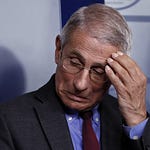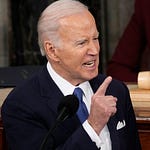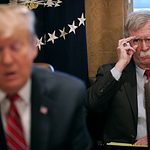Read the Full Transcript:
Larry Bernstein:
Welcome to What Happens Next. My name is Larry Bernstein.
What Happens Next is a podcast where the speaker gets to present his argument in just six minutes and that is followed by a question and answer session for deeper engagement.
Today’s session is on the future of the city and urbanization. Our speaker is Deyan Sudjic who is the former director of the Design Museum in London and the author of the book the Language of Cities.
I want to learn from Deyan why its important that cities give you freedom with its anonymity and how that differs from village life. Deyan will re-examine some of Jane Jacobs insights on city life in the present day, and he will evaluate the success and failure of rejuvenating former industrial sites in urban environments.
After Deyan speaks, we are going to raid the What Happens Next archive and hear excerpts from previous episodes on the topics of urbanization.
We will hear from Howard Husock at the think tank the American Enterprise Institute. Howard will discuss the role of private market solutions for housing for the poor.
Then we will have a discussion with Mitchell Schwarzer who is a Professor of Architectural and Urban History at California College of the Arts. Mitchell will discuss the problems of zoning restrictions and the not in my back yard paradigm that limits new residential construction in California generally and Oakland specifically.
Our final excerpt from the What Happens Next archive will be with Edward Glaeser who is the Chair of the Department of Economics at Harvard and the recent author of Survival of the City: Living and Thriving in an Age of Isolation. Ed will tell us that cities are the center for economic growth and that we need to get back to face-to-face interactions for economic and cultural reasons and because it is so much fun.
Let’s begin with our first speaker Deyan Sudjic.
Dejan Sudjic
Topic: How do Cities Evolve?
Bio: Director Emeritus The Design Museum in London
Reading: The Language of Cities is here
It's impossible to talk about cities without thinking about Jane Jacobs. she was perhaps the first person to make it a subject open to the wider world. My first book about urbanism called a 100 Mile City was to revisit Jacobs and see how well her ideas stood up.
She talked about observing the street life of Greenwich Village and the ballet of the sidewalk. In my first book 100 Mile City, I looked at what the city has become beyond physical form to a sense of belonging and what ties those much bigger cities together. And the Language of Cities was my thoughts about what cities represent. A city is about freedom, that ability to be anonymous, to take from it what you need and to be yourself. Especially in the Anglo-Saxon world, we have this idea that the village community is a desirable ideal place. But the village though it has that sense of belonging and togetherness is no place to be different. A city is a place which offers that freedom.
In the present digital world, some of those qualities of anonymity that chance to be yourself are being eroded. Social Media means that there is no privacy and some of those metropolitan qualities are really under threat.
A city has scale to offer many different things, which gives us a certain sense of freedom. Big cities offer that chance for people to reinvent themselves.
I live in a part of London between Regent's Park, this utopian landscape, and Camden Lock which offers drug dealers, body piercing saloons. Every Saturday night is full of drunkenness and people vomiting into the gutters and it's what city life is about.
A city is about treating individuals as adults. Jane Jacobs acutely pointed out that urban landscapes are never frozen.
There's an area of London known as Spitalfields which is on the edge of the old financial core. And there's an 18th century building, which started out as a Huguenot chapel built by Protestant Weavers from France fleeing religious prosecution. That Protestant chapel then became a Methodist church and then subsequently became a synagogue and is now being used by another generation of migrants from Bangladesh who have turned it into a mosque. That is the sign of urban vitality, to coexist in this wider identity that is a big metropolis.
From the Archives: Greatest Hits on Urbanization
Speaker 1: Howard Husock
Topic: How market solutions create a successful poor side of town
Bio: Senior Fellow in Domestic Policy Studies at the American Enterprise Institute
Reading: The Poor Side of Town is here
Speaker 2: Mitchell Schwarzer
Topic: Why the not in my backyard philosophy has undermined real estate development in California
Bio: Professor of Architectural and Urban History at California College of the Arts
Reading: Hella Town: Oakland’s History of Development and Disruption is here
Speaker 3: Edward Glaeser
Topic: How direct human interaction drives up productivity
Bio: Fred and Eleanor Glimp Professor of Economics and the Chairman of the Department, Harvard
Reading: Survival of the City: Living and Thriving in an Age of Isolation is here
Read the Transcript for the Greatest Hits on Urbanization:














Future of the City